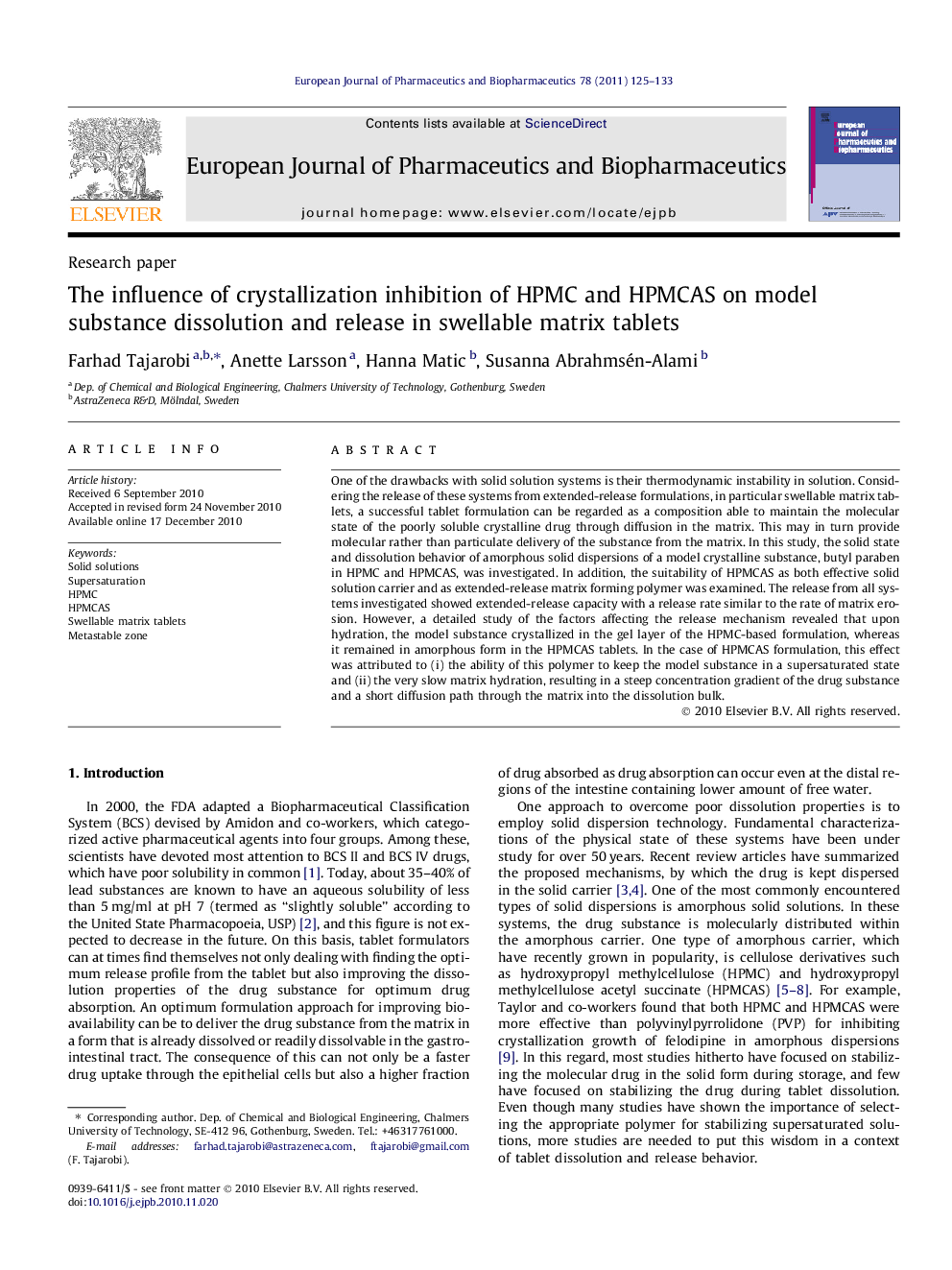| Article ID | Journal | Published Year | Pages | File Type |
|---|---|---|---|---|
| 2084193 | European Journal of Pharmaceutics and Biopharmaceutics | 2011 | 9 Pages |
One of the drawbacks with solid solution systems is their thermodynamic instability in solution. Considering the release of these systems from extended-release formulations, in particular swellable matrix tablets, a successful tablet formulation can be regarded as a composition able to maintain the molecular state of the poorly soluble crystalline drug through diffusion in the matrix. This may in turn provide molecular rather than particulate delivery of the substance from the matrix. In this study, the solid state and dissolution behavior of amorphous solid dispersions of a model crystalline substance, butyl paraben in HPMC and HPMCAS, was investigated. In addition, the suitability of HPMCAS as both effective solid solution carrier and as extended-release matrix forming polymer was examined. The release from all systems investigated showed extended-release capacity with a release rate similar to the rate of matrix erosion. However, a detailed study of the factors affecting the release mechanism revealed that upon hydration, the model substance crystallized in the gel layer of the HPMC-based formulation, whereas it remained in amorphous form in the HPMCAS tablets. In the case of HPMCAS formulation, this effect was attributed to (i) the ability of this polymer to keep the model substance in a supersaturated state and (ii) the very slow matrix hydration, resulting in a steep concentration gradient of the drug substance and a short diffusion path through the matrix into the dissolution bulk.
Graphical abstractPolymer and substance release – HPMC- and HPMCAS-based formulations.Figure optionsDownload full-size imageDownload as PowerPoint slide
